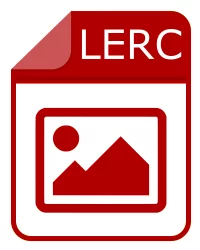LERC (Limited Error Raster Compression)
GISBox is a one-stop 3D GIS data editing, conversion and publishing platform that supports editing in multiple GIS formats such as OSGB/GEOTIFF/RVT, converting to 3DTiles/Terrain and publishing.
Introduction
LERC (Limited Error Raster Compression) is a lossless and lossy compression algorithm for raster data developed by ESRI. It is mainly used in GIS and remote sensing fields, and is optimized for raster data with continuous floating point or integer values. Unlike other image compression formats (JPEG, PNG, etc.), the goal of LERC is to “maximize the compression ratio while maintaining spatial accuracy.”

File Structure
The main uses of LERC are as follows:
- It can be saved as a standalone .lerc file,
- It is often used as an internal compression method embedded in container formats such as TIFF (GeoTIFF) and MRF (Meta Raster Format).
- It is especially widely used in Cloud Optimized GeoTIFF (COG) and ArcGIS image services, supporting high-performance cloud processing.
Pros
- High compression rate and high-speed processing: By setting the tolerance, high compression rate and high processing speed are achieved at the same time compared with traditional ZIP and JPEG.
- Ability to control numerical precision: The maximum error (MaxError) can be specified during compression, allowing precision settings suitable for analysis or visualization.
- Less obvious degradation: Since it mainly targets continuous values (altitude, temperature, NDVI, etc.), image degradation is less obvious.
- Suitable for cloud and web display: Lightweight and fast loading speed, suitable for back-end distribution of online GIS and web maps.
Cons
- Not suitable for categorical data: For “discrete value” data such as land use classification and labels, errors can be fatal.
- Need to understand error control: Since the analysis results will change according to the MaxError setting, users need to understand the accuracy control.
- Depends on compatible software: Unless the software or library is compatible with LERC, extraction and analysis may not be possible.
Application Scenario
LERC is well suited for “scenarios that process continuous-value, high-resolution rasters,” such as elevation (DEM), meteorological data such as temperature and precipitation, remote sensing imagery (NDVI, etc.), sea level height, and terrain shading data. Its performance is particularly useful for cloud data distribution, lightweight display in WebGIS, and geospatial analysis at the city scale.
Example
- GIS satellite remote sensing images are compressed in LERC format.

- Example of a LERC file.
